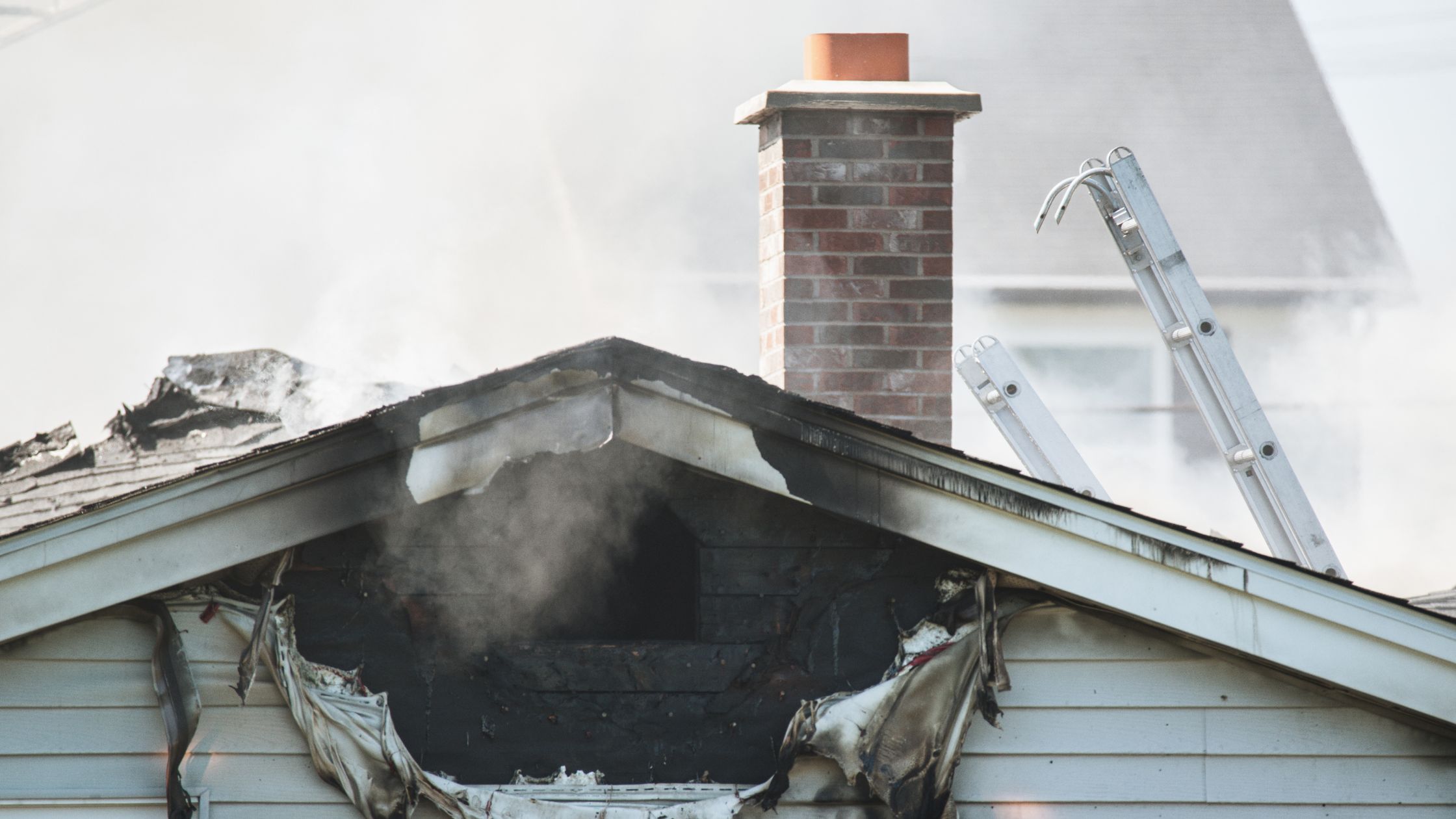A house fire can be disastrous. The truth is both your health and your property can be destroyed by fire. Once the dust settles and you’re left with the aftermath, you may be faced with a daunting question – how do I rebuild my home or how to sell a fire-damaged house?
For example, the soot and smoke that is left over after a house fire is very dangerous to your health. In fact, there are numerous health hazards in the aftermath of a house fire.
You also might not be aware that smoke from a fire can remain in your home for a number of days or that the soot and smoke will become harder to remove with time.
That’s why you’ll likely need a specialized fire repair service if you want to properly clean up and prevent health hazards following a house fire.
Why is the house fire aftermath so dangerous?
In a house fire, hazardous chemicals are released. You see, there are some materials in your home that contain chemicals. The chemicals become hazardous to your health once they catch fire. Despite being flammable, some substances do not burn properly. Common materials that release hazardous chemicals when burning include:
- Carpets and fabrics
- Wool, foam, plastic, and wood products
- Asbestos-containing products
Some of the more common substances that pose a health danger include hydrogen chloride, halocarbons, bromomethane, dioxin chloromethane, and phosgene. Additional common hazardous chemicals include sulfur dioxide, ammonia, hydrogen, hydrogen sulfide, and carbon monoxide.
So what kind of health conditions can the aftermath of a house fire cause?
Respiratory conditions
Your home’s residual soot and smoke damage can aggravate respiratory conditions like asthma, emphysema, and bronchitis. Smoke damage removal is crucial if you have any of these conditions.
Smoke will get into all the cracks and crevices in your home, even the furnishings. All the smoke and particulate matter will be trapped in fabrics, which will also include a hazardous mixture of carbon dioxide, carbon monoxide, and soot.
In the aftermath of a house fire, these pollutants are still present in your home, coating your lungs, and making breathing more difficult over time. Whether you choose to rebuild your home or sell a fire-damaged house, it is crucial that these concerns be addressed promptly and appropriately.
Ocular irritation
Many people have an instinctive reaction when they walk into a burned-out house – their eyes get red, bloodshot, and itchy.
That’s because the eyes tend to respond to the chemicals in the house in a similar way as they would to an allergy to pollen or pet dander.
The lingering smoke and fire particles will often be located in closets, drawers, and behind drapes. In addition to the room where the fire began, these hazards also frequently appear in neighboring rooms.
Skin issues
Your skin may also get irritated by the soot and smoke damage. The chemicals that are still present in the house can aggravate sensitive skin.
Common issues include itching and dryness which are frequently not adequately relieved by lotions and showers.
Long-term dangers
Exposure to the house fire aftermath can pose long-term health problems as well. The occupants of a house could have major health issues if smoke damage is permitted to persist.
Everyone should avoid breathing in hazardous soot and fumes that remain after a fire, especially those with weakened health.
Any soot or smoke damage left behind in your home can be removed by a reputable fire restoration business.
Why hire a professional fire restoration business to clean your home after a fire?
To effectively remove fire and smoke damage, more than a bottle of degreaser and a dust mask are required. After all, soot cannot be removed by just wiping.
To get rid of lingering health risks and persistent odors, you must thoroughly clean all surfaces. A full, secure fire repair depends on professional equipment and understanding of appropriate cleaning methods.
You should also be warned that washing garments with smoke damage in your washer may exacerbate the damage and leave behind unpleasant scents. If you want to save clothing that has been burned, you must use special dry-cleaning methods.
When it comes to fire cleanup, the untrained eye can often quickly sort through damaged items and determine that many of them are hopeless.
However, a fire restoration professional may be able to reduce your loss by using cutting-edge recovery methods. When tainted materials are indeed irrecoverable, appropriate disposal eliminates unneeded health risks.
What should you get rid of after a house fire?
Non-perishable food
One thing you should plan on getting rid of is non-perishable food exposed to firefighting chemicals, heat, and smoke.
Following a fire, food safety is a major concern. It should go without saying that anything stored in porous packaging, such as cardboard, fabric, or thin plastic bags, should be discarded along with any unsealed containers.
What about food that comes in jars or cans?
Food that has been sealed may seem to be fine, but if it has been exposed to heat from a fire, it may no longer be edible. Even if the jar or container is intact, high heat can activate microorganisms that lead to food deterioration or produce an unpleasant flavor. Toxic gasses can also penetrate metal cans and sealed glass jars and ruin food.
Cosmetics & Medicines
It’s crucial to examine your makeup bag and medication cabinet after a fire.
Look for any traces of heat, soot, fire extinguisher dust, or other damage on the items that are kept here. Throw everything that has been burned by the flames or distorted from exposure to extreme heat away without hesitation.
Charred clothing
With the right washing and disinfecting, textiles such as clothing, bedding, and other items can frequently be saved after a fire. However, discard anything that has been burned. Apply considerably greater judgment when choosing apparel for your youngster or infant.
You can use the following technique to remove soot and smoke smell from non-charred clothing:
To wash clothing that has been damaged by a fire, use 4 to 6 teaspoons of tri-sodium phosphate (use caution; TSP is caustic) and 1 cup bleach in 1 gallon of water.
Completely stir the mixture before adding your garment. After properly rinsing the clothing in clean water, put it outside to dry.
In conclusion, never try to salvage items that could endanger your health. When in doubt, discard it!
Want to avoid the health risks that come with the aftermath of a house fire?
To avoid potential health risks, it is important to work with professionals, such as firefighters, electricians, and contractors, to ensure the building is safe to enter and to properly clean up and repair the damage.
Also, you can sell your home in its “as-is” condition to We Buy Fire Damaged Houses. You want to have to worry about repairs, we take care of all of that so you can get your money fast and move on with your life. Fill out the form below to learn more.
Photo by Maksym Kaharlytskyi on Unsplash


